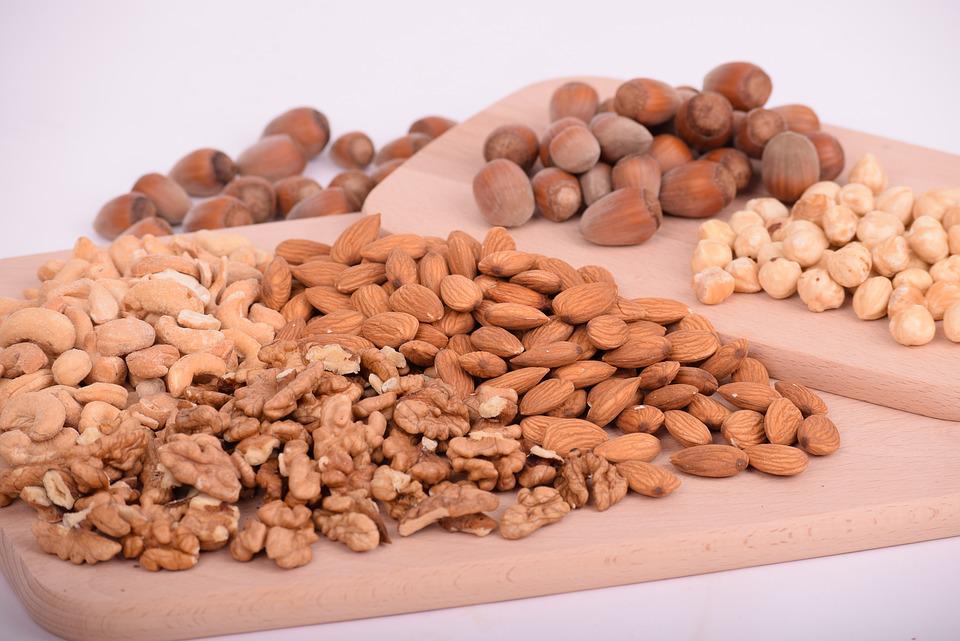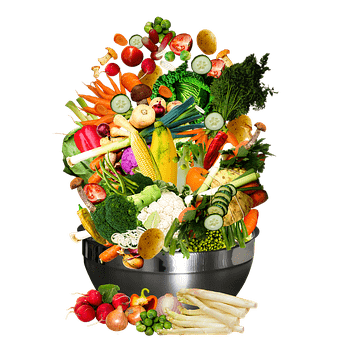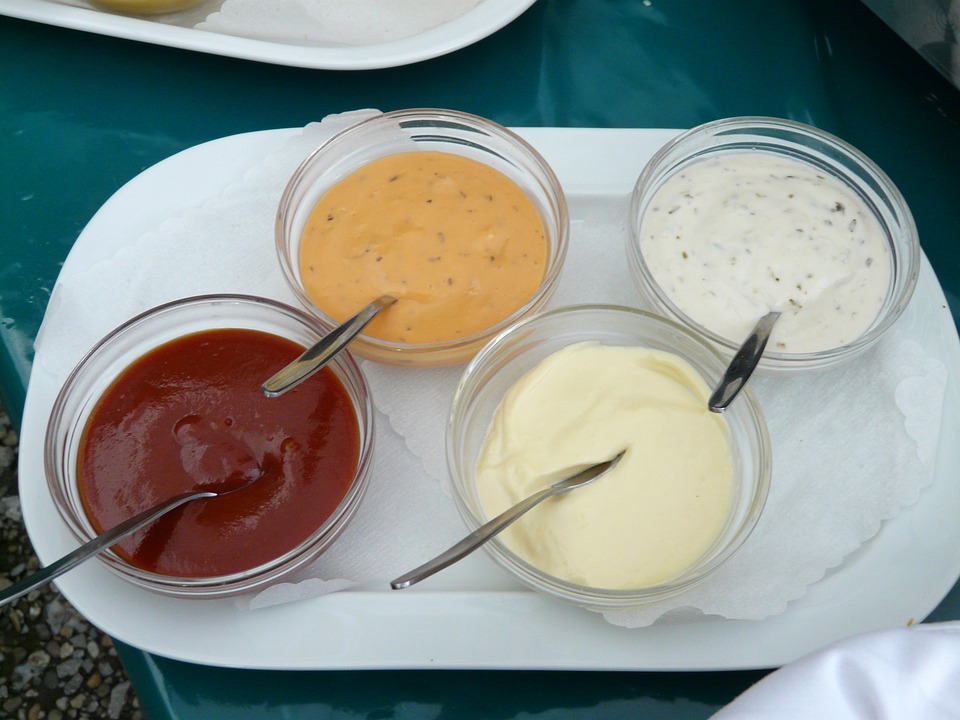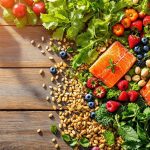
Why do we need protein?
Protein is an essential macronutrient that makes up approximately 17% of an individual’s body weight. It is the main component of muscles, skin, and internal organs. Furthermore, protein plays a role in blood sugar regulation, fat metabolism, and energy function.
Protein is composed of 22 naturally occurring amino acids, which are integral to the function of the protein. Of these, 9 are classified as essential amino acids, meaning that they cannot be produced by the body and must be sourced through diet. In addition to being a significant source of vitamins and minerals, such as zinc and B vitamins, protein is also an essential macronutrient for vegans. As such, it is important that all 9 of the essential amino acids are included in a vegan diet to ensure optimum nutrition.
To make sure you’re getting all the nutrients you need as a vegan, it’s important to mix up the grains, beans, and vegetables you eat. This will ensure you’re getting a variety of protein sources and all the essential amino acids. Relying on processed vegan cheese products to make up for any deficiencies is not recommended, as these products offer few health benefits.
One worry people have about vegetarian and vegan diets is that they might not get enough protein.
Although some people may think otherwise, many experts agree that it is possible to get all the nutrients you need, including protein, from a meatless diet that is carefully planned.
While all plants contain some protein, some contain significantly more protein than others. Both new and older studies suggest that diets with more protein promote muscle strength, feelings of fullness, and weight loss.
Proteins are an essential part of a healthy diet, and they can be found in a variety of plant-based foods. Here are 16 plant foods that are high in protein, so you can get the nutrients you need without eating meat.
Seitan
Many vegetarians and vegans enjoy seitan as a protein source.
This product is made from gluten, which is the main protein found in wheat. It has a similar look and texture to meat when cooked, which makes it a good choice for people who are looking for a meat alternative.
Seitan is a food made of wheat gluten that is very rich in protein, with about 25 grams of protein per 3.5 ounces (100 grams).
Seitan is a good source of selenium and contains small amounts of iron, calcium, and phosphorus.
This meat alternative is usually found in the refrigerated section of many grocery stores, especially at health food stores. You could also make your own version with vital wheat gluten.
Seitan is a versatile ingredient that can be cooked in a variety of ways, making it easy to include in any dish.
People with gluten-related disorders should avoid eating seitan because it contains wheat.
Quinoa
There are many different varieties of quinoa that you can find, including white, red, black, or mixed. 100g of quinoa (cooked weight) contains almost 4g of protein. Quinoa is also known as a complete protein, which means it contains all 22 amino acids. This makes it a great alternative to carbohydrates such as rice and couscous.
Pulses
The term “pulse” refers to an edible seed that grows in a pod, which includes all beans, peas, and lentils. Different pulses include:
- Lentils including puy, green, and red: around 8-9g of protein per 100g
- Chickpeas, including hummus: 7g of protein per 100g
- Garden peas – around 7g per 100g
- Beans, including black-eyed, pinto, butter, cannellini, soya, edamame, and kidney: between 7-10g protein per 100g
- Baked beans do count as a good source of protein but keep an eye on the salt content: 5g per 100g.
Tofu, tempeh, and edamame
Soja products like tofu, tempeh and edamame are especially popular in East Asian cuisine and all originate from the soybean.
They’re also rich in fiber, vitamins, and minerals. Soybeans contain all of the essential amino acids that your body needs, making them a great source of protein. They are also rich in fiber, vitamins, and minerals.
Edamame are immature soybeans with a sweet and slightly grassy taste. They can be enjoyed on their own or added to soups, salads, sushi, wraps, stir-fries, or rice rolls, but they need to be steamed or boiled before you eat them.
Tofu is made from bean curds that are pressed together in a process similar to cheesemaking. Meanwhile, tempeh is made by cooking and slightly fermenting mature soybeans, and then pressing them into a block.
Tofu has a very bland taste, but it takes on the flavors of the other ingredients very easily. Tempeh has a nutty flavor, which is different from tofu.
Both tofu and tempeh are versatile ingredients that can be used in a variety of recipes, including burgers, soups, stews, curries, and chilis.
All three soy-based proteins contain iron, calcium, and 12–20 grams of protein per 3.5-ounce (100-gram) serving. This makes them a great alternative for people who don’t consume meat or are looking for a meat-free option with similar nutritional value.
Edmame contains large amounts of folate, vitamin K, and fiber, all of which help promote digestive health and regularity.
Probiotics, B vitamins, and minerals such as magnesium and phosphorus can be found in tempeh.
Nutritional yeast
It is sometimes used as a vegan cheese substitute, and is rich in vitamins, minerals, and amino acids. Nutritional yeast is a deactivated strain of the yeast Saccharomyces cerevisiae, which is sold commercially as a yellow powder or flakes. It is sometimes used as a vegan cheese substitute, and is rich in vitamins, minerals, and amino acids.
It has a cheesy flavor, making it a popular ingredient in dishes like mashed potatoes and scrambled tofu.
You can sprinkle nutritional yeast on top of pasta dishes or enjoy it as a savory topping on popcorn.
An half ounce (16 grams) of this complete source of plant protein provides 8 grams of protein and 3 grams of fiber.
This nutritional yeast is also rich in zinc, magnesium, copper, manganese, and all the B vitamins, including vitamin B12.
You should be aware that not all types of nutritional yeast are fortified, so check the label before using.
Spelt and teff
Ancient grains are grains that have been around for a long time. Other examples of ancient grains are einkorn, barley, sorghum, and farro.
Teff is a naturally gluten-free grain that comes from an annual grass, while spelt is a type of wheat that contains gluten.
A cup of spelt or teff provides 10-11 grams of protein, which is more than other ancient grains.
Both of these things are great for getting a lot of different nutrients, like complex carbs, fiber, iron, magnesium, phosphorus, and manganese. They also have B vitamins, zinc, and selenium.
Spelt and teff can be used in many recipes as substitutes for other grains, such as wheat and rice. For example, they can be used in baked goods or risotto.
Injera, a flatbread commonly eaten in East Africa, such as Ethiopia, Eritrea, and Sudan, is made of flour from teff.
Hemp seeds
The seeds of the plant contain little to no CBD or THC, which are the compounds in the plant that give it its repressive effects. Hemp seeds come from the Cannabis sativa plant, which contains little to no CBD or THC.
Hemp seeds contain only very small amounts of THC, which is the compound that makes people high when they use cannabis.
Although hemp seeds may not be as popular as other seeds, they contain 9 grams of protein in each 3 tablespoon serving.
Hemp seeds are high in magnesium, iron, calcium, zinc, and selenium. They are also a good source of omega-3 and omega-6 fatty acids, which is considered optimal for human health.
Some studies suggest that the type of fats found in hemp seeds can help reduce inflammation and improve premenstrual syndrome, menopause, and certain skin conditions.
Hemp seeds are a versatile way to add nutrition to your diet. You can sprinkle them on top of a smoothie or bowl of muesli, stir them into a salad dressing, or use them to make homemade granola, energy bars, or protein bars.
Green peas
Green peas contain approximately 9 grams of protein per cooked cup (160 grams). This is slightly more than what a cup (237 mL) of dairy milk contains.
A single serving of green peas provides a quarter of your daily recommended intake of fiber, thiamine, folate, manganese, and vitamins A, C, and K.
Green peas are a good source of nutrients like iron, magnesium, phosphorus, zinc, copper, and several B vitamins.
There are many different recipes you can make that include peas such as pea-and-basil-stuffed ravioli, Thai-inspired pea soup, or pea-and-avocado guacamole.
Buckwheat
Buckwheat is a high-protein, high-fiber seed that is also gluten-free. It is becoming increasingly popular, and can be found in various forms such as flakes, groats, pasta, and flour. This makes it an excellent addition to a vegan diet.
Spirulina
This blue-green algae is definitely a nutritional powerhouse.
A 2-tablepoon (14-gram) serving provides 8 grams of complete protein, as well as 22% of your daily requirements for iron and 95% of your daily copper needs.
Spirulina is a complete protein, containing all the essential amino acids your body needs to make new proteins.
Some studies done on animals and in test tubes show that phycocyanin, a natural pigment in spirulina, has properties that could protect against damage from oxidation, inflammation, and cancer.
furthermore, research exists connecting spirulina consumption to a variety of health benefits. These benefits include a stronger immune system, reduced blood pressure, and improved blood sugar and cholesterol levels.
We can’t make definite conclusions about all of spirulina’s health claims until we have done more research with human subjects.
Ezekiel bread and other bread made from sprouted grains
The bread is made from organic, sprouted whole grains and legumes, including wheat, millet, barley, spelt, and soybeans.
Ezekiel bread contains more protein than most other types of bread. Two slices of Ezekiel bread contain approximately 8 grams of protein.
Grains and legumes that have sprouted contain more healthy nutrients and less antinutrients, which are compounds that can interfere with your body’s absorption of vitamins and minerals.
Additionally, research has revealed that germination strengthens the presence of certain amino acids, such as lysine, which can eventually improve the overall protein quality.
If you combine grains with legumes, it could improve the amino acid profile in bread.
It seems that sprouting increases the levels of soluble fiber, folate, vitamins C and E, and beta carotene. It may also slightly reduce gluten, which can improve digestion among people with gluten-related disorders.
Soy milk
Soy milk is made by soaking and grinding soybeans, then adding water and boiling the mixture. After the soy milk is strained, it is often fortified with vitamins and minerals. Soy milk is a great alternative to dairy milk for people who avoid dairy products.
One cup (244 mL) of this food provides 6 grams of protein as well as being a great source of calcium, vitamin D, and vitamin B12.
Soy milk is a versatile product that can be drunk on its own or used in a variety of cooking and baking recipes. It is available in most supermarkets.
Choose a fortified variety of soy milk or soybeans if you want to get vitamin B12, because it is not naturally present in either of those.
In addition to that, some types may have added sugar, so the best thing to do is choose unsweetened versions whenever possible.
Wild rice
Wild rice has approximately 50% more protein than other long-grain rice varieties.
A cup of cooked rice provides a good amount of protein, as well as healthy amounts of fiber, manganese, magnesium, copper, phosphorus and B vitamins.
Wild rice is not stripped of its bran, which is great for nutrition as it contains fiber, vitamins, and minerals.
However, this causes concerns about arsenic, which can accumulate in the bran of rice crops grown in polluted areas. This is because when rice is milled, the bran and germ are removed, leaving only the starchy endosperm, which contains very little arsenic.
Arsenic is a poisonous chemical that has been linked to many different health problems, especially when a person is exposed to it on a regular basis over a long period of time.
If you want to reduce the amount of arsenic, lead, and cadmium in wild rice, wash it before cooking and use plenty of water to boil it.
Mycoprotein
Mycoprotein is a non-animal-based protein derived from a type of fungus called Fusarium venenatum.
Mostly, tofu is used as a meat alternative to create products such as veggie burgers, patties, cutlets, and fillets.
Products generally contain 15-16 grams of protein and 5-8 grams of fiber per 3.5 ounce (100 gram) serving.
Although there are safety concerns about mycoprotein related to food allergies, research shows that these types of reactions are very rare.
Some products that contain mycoprotein may also have egg whites in them, so if you’re vegan or allergic to eggs, double check the label before eating anything.
Pita and hummus
This Middle Eastern dish of pita and hummus is not only delicious, but provides all nine essential amino acids.
Although pita is made out of wheat, it does not contain enough lysine to be considered a complete protein. Chickpeas, on the other hand, are abundant in lysine.
One medium-sized (57-gram) whole wheat pita with 2 tablespoons (30 grams) of hummus provides a little over 1/4 of the average person’s daily protein intake.
Fried or baked ground chickpeas, also known as falafel, can be added to pita and hummus to increase the protein content.
Protein-rich fruits and vegetables
Some fruits and vegetables contain more protein than others.
The vegetables with the most protein are: broccoli, spinach, asparagus, artichokes, potatoes, sweet potatoes, and Brussels sprouts. Each of these vegetables contains 4-5 grams of protein per cooked cup.
Sweet corn contains a lot of protein, just like many other vegetables.
Fruits have a lower protein content than vegetables. Fruits that have the most protein are guava, cherimoyas, mulberries, blackberries, nectarines, and bananas. They have about 2–4 grams of protein per cup.














